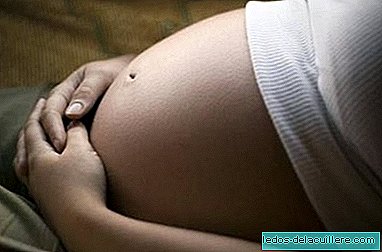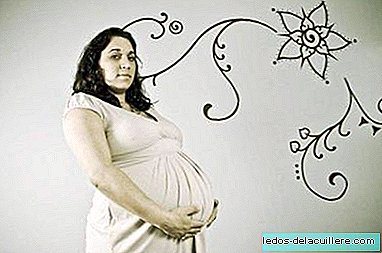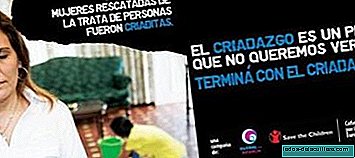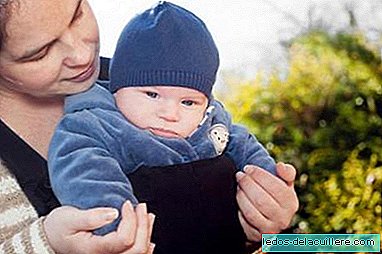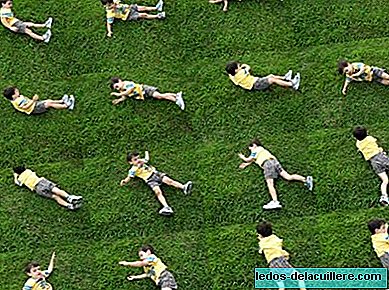
Following the post we published a few days ago when we began to explain how ADHD is diagnosed We will detail in detail what is the system suggested by the Diagnostic and Statistical Manual of Mental Disorders, better known as “DSM-IV-TR”.
This manual explains that to make the diagnosis, five points (or criteria) must be assessed, all of which must be observed in the child being evaluated.
First criterion
The first criterion is assessed through two questionnaires. To give this first criterion as positive, there should be six symptoms among several suggested, in both tests, or six in only one of them. One of the questionnaires focuses on the lack of attention and the other on the hyperactivity and impulsivity of a child.
This is because the DMS-IV-TR defines three different types of ADHD:
- ADHD hyperactive-impulsive type: the child has basically hyperactivity and impulsivity.
- ADHD type inattentive: the child presents basically lack of attention.
- ADHD combined type: the child has both hyperactivity and impulsivity and lack of attention.
Attention Deficit Questionnaire
As we said, Six or more of the following symptoms of inattention should occur and these must have persisted for at least 6 months, with an intensity that is not consistent with the child's level of development and that does not adapt to their environment.
- He often does not pay enough attention to details or makes mistakes due to carelessness in school assignments, at work or in other activities.
- He often has difficulty maintaining attention in tasks or in recreational activities.
- He often seems not to listen when spoken directly.
- He often does not follow instructions and does not finish school assignments, assignment or obligations in the workplace (not due to negative behavior or inability to understand instructions).
- He often has difficulty organizing tasks and activities.
- He often avoids, dislikes or is reluctant to engage in tasks that require sustained mental effort (such as school or household work).
- He often misplaced objects necessary for tasks or activities (such as toys, school work, pencils, books or tools).
- He is often easily distracted by irrelevant stimuli.
- It is often neglected in daily activities.
Hyperactivity and impulsivity questionnaire
Likewise, Six or more of the following symptoms of hyperactivity and impulsivity should occur and these must have persisted for at least 6 months, with an intensity not consistent with the child's level of development and that prevents the child's proper adaptation to his environment.
- He often moves his hands or feet excessively or removes himself in the seat.
- He often leaves his seat in class or in other situations where it is inappropriate to do so.
- It often runs or jumps excessively in situations where it is inappropriate to do so (in adolescents or adults it may be limited to feelings of restlessness).
- He often has difficulty playing or quietly engaging in leisure activities.
- Often "it is running" or acts as if it "had an engine."
- Often talks in excess.
- Often precipitates answers before the questions have been completed.
- He often has a hard time keeping a shift.
- It often interrupts or interferes with the activities of others (for example, interferes with conversations or games).
Second criterion
Some symptoms of hyperactivity-impulsivity or neglect that caused alterations were present before 7 years old.
Third criterion
Some alterations caused by symptoms occur in two or more environments (for example if it happens at school and also at home).
There are many children who seem to have behaviors of a child with ADHD at school but behave differently at home (and suffer, perhaps, what is called a "school maladjustment") or vice versa, when the mother expresses the suspicion that Your child has a problem and a different behavior is observed in school.
Fourth criterion
Must exist clear evidence of a clinically significant deterioration of social or academic activity. Let's say that it is observed that the child does not adapt to school, has relationship problems with classmates and / or with the teacher and if their academic performance is impaired.
Fifth criterion
Symptoms do not appear exclusively in the course of a generalized developmental disorder, schizophrenia or other psychotic disorder and are not better explained by the presence of another mental disorder (for example, mood disorder, anxiety disorder, dissociative disorder or personality disorder).
This point seeks to eliminate the likelihood that the child's behavior is due to an existing chronic disorder or an acute disorder (the child's parents are separating, the child has undergone recent changes that have affected him, etc.).
What do you think?
As usual, I would like to know your opinion about it. As you can see the diagnosis is based on the observation of children's behavior and assess whether they act in a certain way.
Answering the questions of the first criteria questionnaire, I observe that my son (and most children, I would say), could easily test positive, although it is also true that he is a four-year-old child.
I don't know what you think, but to me the fact that everything is so subjective leaves me quite a bit of doubt about the possibility of ending up diagnosing children who don't really have ADHD.





